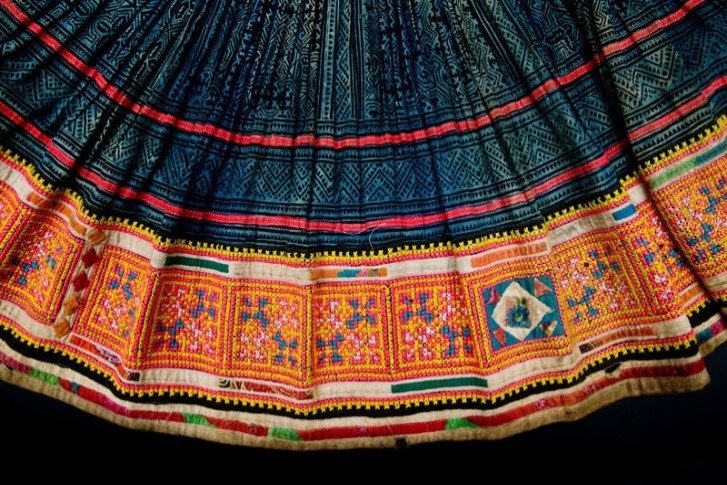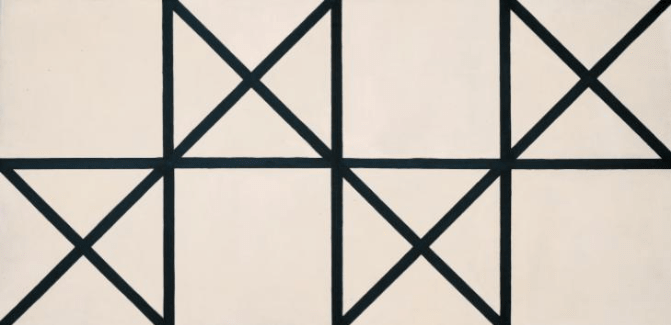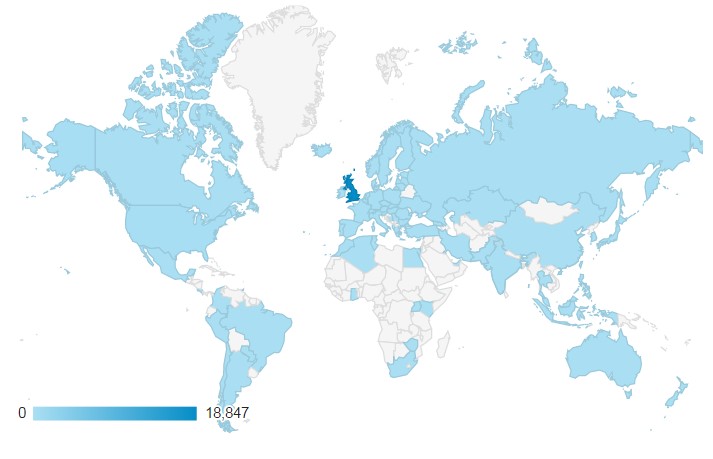Clothing. What comes to mind when you hear that word? Basic necessity? Maybe my livelihood? Everyone has their own view on the matter. The one thing that is certain about clothing is that it is a hot topic. Visiting the textiles collection at Goldsmiths made this more apparent.
The Textiles collection is housed in Deptford Town Hall, which I think is a pretty good match. Nothing but beauty surrounded me upon entering the collection. Fabrics, fashion guides and clothing filled the archives. I was blown away by the phenomenal attention to detail that went into the clothing available. The stitching was great, and the prints were stunning. I am particularly in love with embroidered garments, and there were so many. There was one outfit; it looked almost tribal in design. It was beautiful. The embroidery was so elaborate. I wonder if anyone else wanted to wear the outfit — I certainly did. The price of similar clothing in shops can have a maximum price range of well into the thousands. Why should self-expression come with such a high cost? It is because the 21st century likes to associate itself with being very fashion forward.
guides and clothing filled the archives. I was blown away by the phenomenal attention to detail that went into the clothing available. The stitching was great, and the prints were stunning. I am particularly in love with embroidered garments, and there were so many. There was one outfit; it looked almost tribal in design. It was beautiful. The embroidery was so elaborate. I wonder if anyone else wanted to wear the outfit — I certainly did. The price of similar clothing in shops can have a maximum price range of well into the thousands. Why should self-expression come with such a high cost? It is because the 21st century likes to associate itself with being very fashion forward.
 A lot of the prints in the collection are making a resurgence into fashion today. Some never even left — plaid and lace for example. Elegance is the word I would use to link together all of the old fabrics. Would I use that word today? Maybe not as much. I commend people who take risks, but some risks are just too much. I am a firm advocate of body confidence, but what is up with those see-through jeans? You might as well wear only your underwear, especially since they are not cheap. If your see-through jeans are your favourite clothing item, then good on you. Each to their own.
A lot of the prints in the collection are making a resurgence into fashion today. Some never even left — plaid and lace for example. Elegance is the word I would use to link together all of the old fabrics. Would I use that word today? Maybe not as much. I commend people who take risks, but some risks are just too much. I am a firm advocate of body confidence, but what is up with those see-through jeans? You might as well wear only your underwear, especially since they are not cheap. If your see-through jeans are your favourite clothing item, then good on you. Each to their own.
The one downside of the clothing in the collection was the limited options available for  women in England, predominantly in the 19th century. They all dressed in similar coloured and styled clothes: suede skirt suits with crisp white shirts. There was no real sense of individuality — more a sense of professionalism. That is the biggest change from the 19th century to now. Clothes are more powerful as instruments of our identity. They reflect what we stand for. I wish there was a compromise between the two generations: individuality, decent prices and informed fashion choices.
women in England, predominantly in the 19th century. They all dressed in similar coloured and styled clothes: suede skirt suits with crisp white shirts. There was no real sense of individuality — more a sense of professionalism. That is the biggest change from the 19th century to now. Clothes are more powerful as instruments of our identity. They reflect what we stand for. I wish there was a compromise between the two generations: individuality, decent prices and informed fashion choices.
The Textiles collection taught me a lot about the importance of clothing, and moreover, the shift in the use of clothing from the 19th century to now.
This blog was written by Danielle, a history at work student, who completed her placement at Goldsmiths Special Collections.

 ically pleasing. However, on a serious note, could they not have found anything better to display on their website? I could have drawn his piece, and that says a lot. I am sure a backlash of angry fans of Hill are waiting to attack me, but that is my view. For me, realism is my favourite style. I like when you can identify what is happening in an image fairly quickly. The fact that subjects of realism were predominantly from the lower and working classes appeals to me even more. When I look at realist art, I am truly dumbfounded by how incredible the artist is. I can compare the image to its counterpart in real life to see how life-like the image is.
ically pleasing. However, on a serious note, could they not have found anything better to display on their website? I could have drawn his piece, and that says a lot. I am sure a backlash of angry fans of Hill are waiting to attack me, but that is my view. For me, realism is my favourite style. I like when you can identify what is happening in an image fairly quickly. The fact that subjects of realism were predominantly from the lower and working classes appeals to me even more. When I look at realist art, I am truly dumbfounded by how incredible the artist is. I can compare the image to its counterpart in real life to see how life-like the image is.  Edward Hopper’s “Nighthawks”, on the right, is one of the most iconic realist paintings. Looking at it, I feel like I am standing on the street looking into the bar. I can imagine the smell of gin lingering in the air. It is a scene that we would often encounter on a regular basis in reality. The painting is pretty simplistic, but makes viewers think. Why is one man sitting alone? Who are the couple? Are they even in a bar? We may never know the answers to these questions. However, that is art. It can excite and baffle you at the same time.
Edward Hopper’s “Nighthawks”, on the right, is one of the most iconic realist paintings. Looking at it, I feel like I am standing on the street looking into the bar. I can imagine the smell of gin lingering in the air. It is a scene that we would often encounter on a regular basis in reality. The painting is pretty simplistic, but makes viewers think. Why is one man sitting alone? Who are the couple? Are they even in a bar? We may never know the answers to these questions. However, that is art. It can excite and baffle you at the same time.








